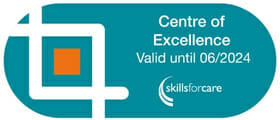Hi everyone and thanks as always for the feedback on last week’s post during Self Care Week. As last week was Safeguarding Adults Week, it seems natural to talk about safeguarding.
First things first, safeguarding is vitally important and everyone should feel safe, no matter what their environment, so if someone says something or you see something, you need to know what to do with that information. You need to know your policy, how to follow it and the local procedure; if you don’t know what these are or who you would contact, now is a really good time to find out.
Safeguarding, as the saying goes, is “everyone’s business”, but what does that actually mean? As the government likes their “three phrase slogans” at the moment, I thought I would share one that stuck in my mind from a while back now, which is simply:
If you see something, say something….
Now whilst safeguarding can be, and often is, complex, the duty we all have to “say something” is a straightforward message. I would like to share a brief example from years ago that always stuck in my mind; I will share anonymously for obvious reasons but if you are reading this “G”, I hope you are well.
We delivered a workshop several years ago and we were talking about the assessments that are built into Click to measure understanding and start the building of a competence portfolio. One of the managers in the session shared how they supported someone with complex needs, who required multiple carers to visit at various times throughout the day and night.
One care worker…
One worker shared that they had seen something, and reported it. Now, that manager knew that at least seven other workers were supporting the same person, yet only one of them had reported something.
So, what to do? The training matrix is green, everyone is in date, everyone has been in safeguarding training. BUT, only ONE worker out of EIGHT has reported something?
The manager decided to arrange for all 8 members of staff to complete the safeguarding assessment, just to check. Once everyone completed the assessment, each one of them reported the same incident that the first care worker had shared.
They all said the same thing: “Oh, I thought so-and-so was going to say something!” They all assumed that someone else would say something; simply by taking just a few minutes to revisit the safeguarding assessment reminded everyone that they cannot assume.
Now, whilst that example is from many years ago, the principle remains the same: “never assume” because, as some of us would say, it makes an ass out of you and me!
I am not suggesting that safeguarding is simply down to ‘If you see something – say something AND never assume’ but sometimes in difficult situations we just need to recall the most important elements.
What else could we do?
Whilst the following looks like we are blowing our own trumpet, we do so because we care. We care about social care and we care about you.
Here are just some of the free resources we provide to support the sector:-
- Safeguarding Adults Course (this week only)
- Liberty Protection Safeguards Mini Course
- Supervision Skills for Managers Course
- Stress and Resilience Course
- Last week’s post about Self Care
- Safeguarding for Managers and Safeguarding Leads Course – keep in touch for release date
Finally, if you would like to contribute to next week’s follow-up post on Safeguarding and CQC data points, then just click here.
Catch up next week…





